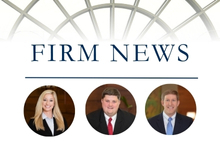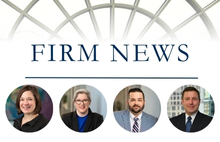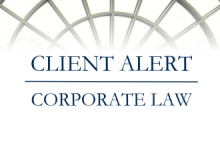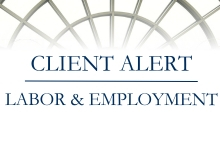Department of Labor’s Proposed Rule Would Make More than One Million Currently Exempt Workers Eligible for Overtime
March 2019On March 7, 2019, the U.S. Department of Labor (DOL) took its long-anticipated first step in revising the regulations governing eligibility for overtime pay under the Fair Labor Standards Act (FLSA). These Proposed Regulations would supersede the Obama-era 2016 final rule on the topic, which was effectively scuttled by a federal court in Texas and then abandoned by the Trump administration. The Proposed Regulations largely follow the 2016 model, but with significant differences.
Increasing the Salary Threshold to $35,308 Annually
Currently, employees qualify for the FLSA’s so-called “white collar” exemptions if they are paid a guaranteed salary of at least $455 per week ($23,660 per year) and perform specified administrative, professional, or executive duties. This salary threshold was set in 2004 and is almost universally regarded as too low. The 2016 Rule attempted to more than double the salary threshold, to $913 per week ($47,476 per year). Many employers and at least one federal judge considered this far too high. Taking a middle ground, the Proposed Regulations would set the salary threshold at $679 per week ($35,308 per year), effective January 1, 2020.
Increasing the Highly Compensated Employee Salary Threshold to $147,414 Annually
The 2004 FLSA regulations created a streamlined test for determining whether certain “highly compensated” employees were exempt from the law’s overtime requirements. The intent was that employees making at least $100,000 per year should be exempt if they have some exempt duties. The 2016 Rule increased this threshold to $134,004. The Proposed Regulations adopt the same methodology as the 2016 Rule and would increase the threshold to $147,414, effective January 1, 2020.
Including Certain Bonuses and Incentives
One popular element of the 2016 Rule was its inclusion of flexibility in the salary basis test: essentially defining “salary” to require a guaranteed payment irrespective of the quantity or quality of the employee’s work. The Proposed Regulations adopt this principle in allowing employers to credit non-discretionary bonuses and incentive payments (such as commissions) toward the minimum salary level, up to a 10% cap.
Expressing Intent to Update Thresholds Periodically
Employers and regulators agree that the white collar exemptions’ salary levels should be adjusted periodically—certainly more frequently than once every decade or two. However, disagreement has arisen over how to accomplish this. The 2016 Rule drew criticism from employers by specifying automatic increases based on inflation. In contrast, the Proposed Regulations express the DOL’s intention to revisit the salary levels every four years through robust notice-and-comment rulemaking.
The DOL estimates that if its Proposed Regulations were to take effect, more than 1,000,000 employees would gain overtime eligibility. Interested parties will have 60 days within which to provide comments and feedback to the DOL, after which the DOL will issue its final rule.
We will continue to monitor the rulemaking process and provide further guidance when more information becomes available. Meanwhile, employers should plan for the possibility that the salary threshold will increase in or around 2020. If you have questions about how the Proposed Regulations would affect your business, or you would like to discuss options for addressing the changes to come, please contact a Lewis Rice Labor & Employment attorney.








